Sports
Pia Babnik excited to defend individual title in Jeddah finale of Aramco Team Series

One of the most exciting golf events on the schedule returns to Saudi Arabia over the weekend of November 9, as the Aramco Team Series reaches its final leg.
There is great excitement among all players involved, but few players will be as happy to return to the course as Pia Babnik, as the defending champion looks to land a second straight victory in the event. But, what should golf fans be aware of this weekend, and how does the competition work?
How Does The Aramco Team Series Work?
The Aramco Team Series has grown in popularity throughout its short history, which led to the 2021 season being expanded. Nowadays, there are events held across the globe, with competitions also taking place in the United Kingdom, the United States, and Spain. All events on the circuit boast a purse of $1 million, with the event in Saudi Arabia being the final event of the series.
It is an interesting concept for fans, as players compete in individual and team competitions. In total, there are 36 teams, with each consisting of three professionals and one amateur player. Drafts are used to form the teams, with the captains being the highest-seeded players in the rankings.
Previous Aramco Team Series Events This Season
The first Aramco Team Series of the season took place in Bangkok in May, with Manon De Roey claiming victory by three shots from Johanna Gustavsson. A team made up of Whitney Hillier, Chonlada Chayanun, Krista Bakker and Pattanan Amatanon won the team event in Thailand by three shots.
The action moved to London in the middle of June, with Bronte Law taking a home success after finishing one shot clear of compatriot Georgia Hall. Success in the team event was claimed by Nicole Garcia, Kelly Whaley, Madelene Stavnar, and Mia Baker, who won a playoff in England.
Spain took center stage in the Aramco Team Series in August, with one of the best players in the world taking her team to glory in Sotogrande. Jessica Korda was in fine form, as she led Noora Komulainen, Tereza Melecka, and Malcolm Borwock to a win by one shot. The individual event was also won by Kelly Korda, as she finished three shots clear.
The penultimate event on the Aramco Team Series schedule was staged in New York in the middle of October. There would be further American success, as Lexi Thompson finished three shots clear of Brooke Henderson and Madelene Sagstrom. Meanwhile, the team event was won by Johanna Gustavsson, Jessica Karlsson, Karolin Lampert, and Jennifer Rosenberg.
Golf Betting Information
Like all golf events, the Aramco Team Series is a huge betting event for golf fans and attracts many bettors from the Arabic regions. Some of the largest betting operators, including 888sport, 10Bet, and BetFinal even offer special campaigns to Saudi Arabian betters in Arabic. Betting markets are available on the outright winner of the event, as well as the leaders on each of the respective days that are competed. Meanwhile, bettors can also wager on whether a hole-in-one will be scored at the event this year.
Aramco Team Series Jeddah Information
The final leg of the Aramco Team Series gets underway on November 9, with the team finale reaching its conclusion the following day. Meanwhile, the individual action will run until November 11. This event will take place at Royal Greens Golf and Country Club, which is a prestigious 18-hold championship course offering picturesque views of the Red Sea coastline.
The event was won in 2021 by Pia Babnik, as she finished one shot clear of Olivia Cowan with an Aramco Team Series record aggregate score of 200. Babnik will once again be a leading contender for the event this year, as she looks for a famous second victory in the event in Saudi Arabia. Meanwhile, Emily Kristine Pederson was the winning captain in the team event last year, and she could have a fine chance in the individual event in 2022.
Conclusion
The Aramco Team Series is one of the most interesting events on the women’s golfing calendar, as there is both competitive team and individual action taking place. This year’s event promises to be no different, and fans of the sport can get involved in the action by placing wagers with some of the most trusted sportsbooks available online.
Recommended reading: 6 facts about Saudi Arabia’s First Grand Prix in Jeddah
Bruce Dowbiggin
From Heel To Hero: George Foreman’s Uniquely American Story
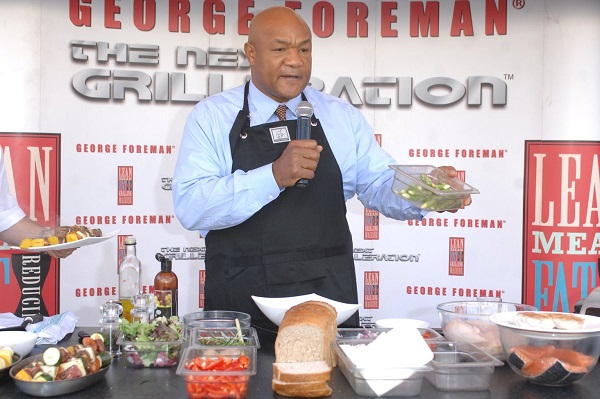
“The more you learn, the more you realize how much you don’t know.”— George Foreman
For those who thought Donald Trump’s role progression (in WWE terms) from face to heel to face again was remarkable, George Foreman had already written the media book on going from the Baddest Man in the World to Gentle Giant.
It’s hard for those who saw him as the genial Grill Master or the smiling man with seven sons all named George (he also had seven daughters, each named differently) to conjure up the Foreman of the 1970s. He emerged as a star at the 1968 Olympics, winning the gold medal in heavyweight boxing. His destruction of a veteran Soviet fighter made him a political hero. In an age that already boasted a remarkable heavyweights Foreman was something unique.
Muhammad Ali, Joe Frazier, Ken Norton, Ron Lyle and Jimmy Ellis were still bankable household names for boxing fans— but on the downside of famous careers. They each had their niche. Foreman was something altogether different. Violent and pitiless in the ring. Unsmiling as he dismantled the boxers he met on his way to the top. He was the ultimate black hat.
With the inimitable Howard Cosell as his background track , he entered the ring in 1973 against the favoured ex-champ Frazier, coming off his three epic fights with Ali. While everyone gave Foreman a chance it was thought that the indomitable Frazier, possessor of a lethal left hook, would tame the young bull.

Instead, in under two rounds of savagery , Foreman sent Frazier to the canvas six times. Cosell yelled himself horse crying, “Down goes Frazier! Down goes Frazier!” This was a whole new level of brutality as the poker-faced Foreman returned to his corner as the most feared boxer on the planet. For good measure Foreman destroyed Norton in 1974.
Fans of Ali quaked when they heard that he would face Foreman’s awesome power in Africa in the summer of 1974. They knew how much the trio of Frazier brawls had taken from him. The prospect of seeing the beloved heavyweight champ lifted off his feet by Foreman’s power left them sick to their stomach. Foreman played up his bad-boy image, wearing black leather, snarling at the press and leading a German shepherd on a leash.
Everyone knows what happened next. We were travelling the time in the era before internet/ cell phones. Anticipating the worst we blinked hard at the headline showing the next day that it was a thoroughly exhausted Foreman who crumbled in the seventh round. The brilliant documentary When We Were Kings is the historical record of that night/ morning in Kinshasa. The cultural clash of Ali, the world’s most famous man, and the brute against the background of music and third-world politics made it an Oscar winner.
But it’s largely about Ali. It doesn’t do justice to the enormity of Foreman’s collapse. Of course the humiliation of that night sent Foreman on a spiritual quest to find himself, a quest that took the prime of his career from him. It wasn’t till 1987 that he re-emerged as a Baptist minister/ boxer. With peace in his soul he climbed the ranks again, defiantly trading blows in the centre of the ring with opponents who finally succumbed to his “old-man” power.
Instead of the dour character who was felled by Ali, this Foreman was transformed in the public’s eye when he captured the heavyweight title in 1994, beating Michael Moore, a man 20 years his junior. He smiled. He teased Cosell and other media types. He fought till he was 48, although he tried to comeback when he was 55 (his wife intervened)

And, yes, for anyone who stayed up late watching TV there was the George Foreman Grill, a pitchman’s delight that earned him more money than his boxing career. HBO boxing commentator Larry Merchant commented that “There was a transformation from a young, hard character who felt a heavyweight champion should carry himself with menace to a very affectionate personality.”
There was a short-lived TV show called George. There was The Masked Singer as “Venus Fly Trap”. And there were the cameos on Home Improvement, King Of The Hill and Fast ’N Loud, delighting audiences who’d once reviled him. He cracked up Johnny Carson.
Foreman’s rebound story was uniquely American. Where Canadians are enthusiastically damning Bobby Orr and Wayne Gretzky for political reasons, Foreman never became a captive of angry radicals or corporate America. He went his own way, thumping the bible and the grill. Rest easy, big man.
Bruce Dowbiggin @dowbboy is the editor of Not The Public Broadcaster A two-time winner of the Gemini Award as Canada’s top television sports broadcaster, his new book Deal With It: The Trades That Stunned The NHL And Changed hockey is now available on Amazon. Inexact Science: The Six Most Compelling Draft Years In NHL History, his previous book with his son Evan, was voted the seventh-best professional hockey book of all time by bookauthority.org . His 2004 book Money Players was voted sixth best on the same list, and is available via brucedowbigginbooks.ca.
Sports
WHL Expands To Penticton, Launches Franchise Application Process For Chilliwack
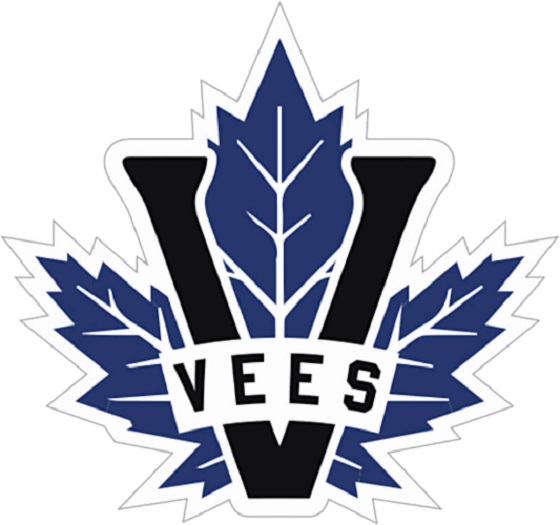
News release from the Western Hockey League
The Western Hockey League announced today the awarding of an expansion franchise to the Penticton Vees for the 2025-26 WHL season along with the initiation of a franchise application process for the City of Chilliwack, to begin play in the 2026-27 WHL season.
“This is an exciting day, as the Western Hockey League takes its next step as the world’s finest development league for junior hockey players,” commented WHL Commissioner Dan Near. “Communities within B.C. produce talented young players from thriving grassroots hockey programs and we’re pleased to deliver WHL franchises to two important centres in the province – Penticton and Chilliwack. In each market the WHL operates in, we aim to serve as role models within the local hockey community, business community, and beyond. We look forward to the opportunity to continue these efforts in Penticton and Chilliwack.”
Penticton possesses an incredibly rich hockey history, a strong commitment from its municipal government, outstanding facilities, community support, and is also home to high-performance competition, including the Canadian Sports School Hockey League (CSSHL) Championships.
“We’re thrilled with the announcement that the Western Hockey League is bringing the top tier of junior hockey to Penticton,” said Julius Bloomfield, Mayor of the City of Penticton. “Our community has a long, proud hockey tradition and this represents the next chapter in our story. The WHL will bring excitement, excellence and economic activity to our town and we can’t wait for the first training camp to open.”
Chilliwack is a longstanding outpost for junior hockey in the Lower Mainland. As a growing and thriving community with dedicated municipal government, Chilliwack will quickly establish itself as a pillar of strength in the WHL.
“Having the WHL select Chilliwack for expansion is exciting for our community,” said Jason Lum, Acting Mayor of the City of Chilliwack. “The league has a strong track record of supporting youth programs and local charities while boosting the economy in its home cities. Along with the high calibre of play, the WHL also plays a crucial role in developing future NHL stars.”
Hockey Canada has granted approval for the Penticton Vees to join the WHL and return to sanctioned hockey activities.
“Today’s announcement is an exciting moment for hockey in British Columbia and Western Canada, and we are thrilled that fans in Penticton and Chilliwack will get to experience elite-level junior hockey in their communities,” said Katherine Henderson, President and Chief Executive Officer of Hockey Canada. “Providing Canadian athletes with premier development opportunities in our country is of the utmost importance to Hockey Canada and our Members, and we anticipate the WHL’s expansion will have a positive impact on our efforts with BC Hockey to grow the game in a hockey system that prioritizes the safety and wellness of participants. We congratulate the WHL and the cities of Penticton and Chilliwack for their roles in ensuring the sport of hockey continues to thrive and unite communities across our country.”
The expansion of the WHL to Penticton and Chilliwack will increase the WHL footprint to 24 member Clubs by 2026-27, including 18 throughout Western Canada and six in the Pacific Northwest United States.
“As we evaluate the everchanging landscape of hockey, this marks a critical opportunity for the WHL to invest in enhancing the WHL Player Experience across all 24 WHL markets,” Near said. “The WHL remains committed to offering a world-class player experience for hockey’s elite junior-aged players, and with that, we will continually raise our standards across the board to adapt to the changing landscape.”
Strategically, these two key markets fit perfectly within the WHL’s existing footprint in the Western Conference, particularly as it pertains to B.C.’s Lower Mainland, Okanagan, and South Thompson Valley regions. Penticton will join the WHL’s B.C. Division and Western Conference for 2025-26.
Penticton, British Columbia (2025-26)
The WHL Penticton franchise will be owned and operated by Graham Fraser, who has been the majority owner of the BCHL’s Penticton Vees since June 2008. Fraser will migrate the Vees franchise to the WHL.
Joining Fraser as partners are Winnipeg Jets forward and Ontario Hockey League alumnus Mark Scheifele, former New York Rangers goaltender Mike Richter, and prominent Penticton businessmen Joe Walters and Gord Kovacik.
“We are excited to welcome Graham Fraser and the entire Penticton Vees ownership group, along with Fred Harbinson, to the WHL,” commented WHL Commissioner Dan Near. “Following productive conversations with BC Hockey and Hockey Canada, we collectively agree that the repatriation of the Penticton Vees is good for the game of hockey in Canada.”
Harbinson will serve as the President, General Manager, and Head Coach of the WHL’s Penticton Vees.
The WHL’s Penticton Vees franchise will join the B.C. Division in the Western Conference for the 2025-26 regular season.
“It’s a very exciting time for our community and the Penticton Vees,” Fraser said. “We feel the city and hockey team are ready to take the next step and join the WHL. With Fred Harbinson, Dean Clarke, and our staffs, we will be in a great place to have continued success. I would like to thank our ownership group of Mark Scheifele, Mike Richter, Joe Walters, and Gord Kovacik for their support in making this a reality.”
The Penticton Vees will be bound by Hockey Canada’s existing player transfer regulations as well as WHL regulations. The Vees will participate in the 2025 WHL Expansion Draft, which is scheduled for Wednesday, May 7. They will also participate in the 2025 WHL Prospects Draft, 2025 WHL U.S. Priority Draft, and 2025 CHL Import Draft. The Vees have begun recruiting a 15-player list, which will expand to the WHL standard 50-player list May 7.
“This is a monumental moment in our franchise’s history, starting as an iconic senior team in the 1950s, to being a premier Junior ‘A’ team for the past 65 years,” Harbinson said. “The move to the WHL is the next chapter in the legacy of hockey in Penticton. I look forward to this new challenge, while competing against the best players and coaches in junior hockey.”
Penticton’s South Okanagan Events Centre – a WHL-ready, multi-purpose facility that seats 5,000 – has been home to the Penticton Vees since 2008.
“Penticton’s South Okanagan Events Centre is WHL ready and is one of the best amateur sports facilities in all of Western Canada,” Near said. “It is only natural that this gem houses a franchise in the WHL. We eagerly anticipate the opportunity to bring WHL hockey to Penticton for the 2025-26 WHL season.”
Opened in 2008, the South Okanagan Events Centre is owned by the City of Penticton and managed by Oak View Group. The Okanagan’s premier sports and entertainment venue, the South Okanagan Events Centre has played host to world-class concerts and events and houses the Okanagan Hockey School along with the B.C. Hockey Hall of Fame.
The 95,000-square-foot facility includes three ice rinks, modern dressing rooms, food and beverage service, team merchandise store, and 27 luxury suites. The South Okanagan Events Centre is also connected to the 60,000-square-foot Penticton Trade and Convention Centre – one of the largest trade show and convention facilities in B.C.
The greater Penticton region is home to nearly 45,000 people. Penticton represents a natural, geographical rival for the WHL’s Kelowna Rockets and Kamloops Blazers.
Chilliwack, British Columbia (2026-27)
The City of Chilliwack is home to the Chilliwack Coliseum – a WHL-ready, multi-purpose facility that seats 5,000. Opened in 2004, the Chilliwack Coliseum is owned and operated by the City of Chilliwack. The Chilliwack Coliseum has played host to world-class concerts and events, including trade shows and conventions.
The City of Chilliwack is set to invest $3.7 million in upgrades to the Chilliwack Coliseum prior to the arrival of a WHL franchise in 2026-27, including enhancements to the scoreboard, lighting system, NHL-standard boards, and more.
The 144,000-square-foot facility includes two NHL-sized ice rinks, modern dressing rooms, food and beverage service, team merchandise store, and 13 luxury suites.
Chilliwack has an estimated population over 107,000, with expectations for it to see the largest population growth in the Fraser Valley in the next five years. Chilliwack also represents a natural, geographical rival for the WHL’s Vancouver Giants.
The WHL will immediately launch a franchise application process where interested parties will be invited to present a plan including a vision for hockey operations, community integration, and business operations, which will be evaluated by the WHL Commissioner and Executive Committee.
The WHL anticipates announcing the outcome of the franchise application process prior to the start of the 2025-26 WHL season, subject to the approval of the WHL Board of Governors.
-

 Alberta2 days ago
Alberta2 days agoAlberta Institute urging Premier Smith to follow Saskatchewan and drop Industrial Carbon Tax
-
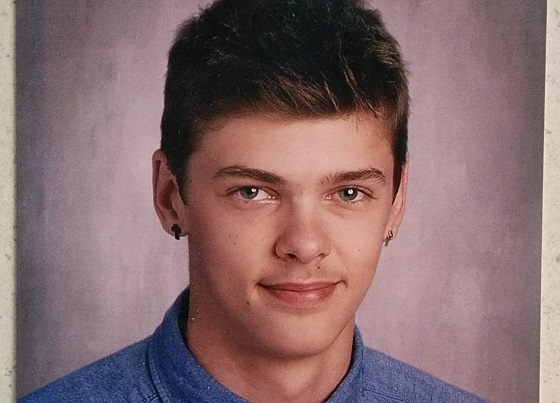
 Addictions2 days ago
Addictions2 days agoShould fentanyl dealers face manslaughter charges for fatal overdoses?
-
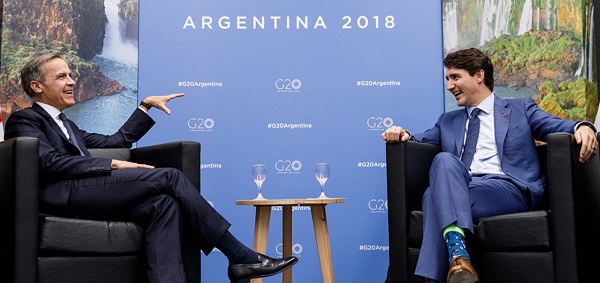
 2025 Federal Election2 days ago
2025 Federal Election2 days agoFool Me Once: The Cost of Carney–Trudeau Tax Games
-
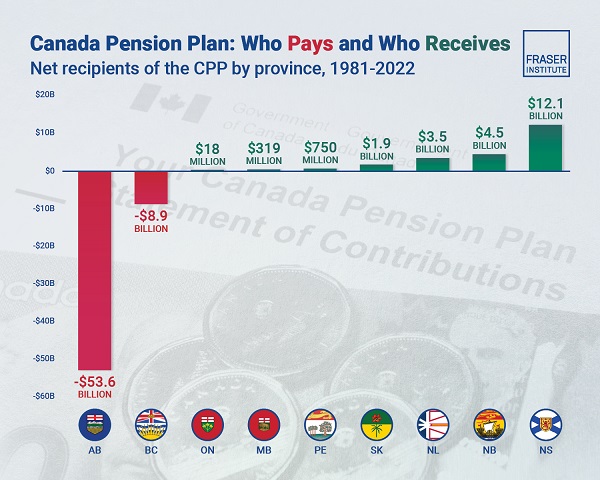
 Alberta2 days ago
Alberta2 days agoAlbertans have contributed $53.6 billion to the retirement of Canadians in other provinces
-

 Also Interesting1 day ago
Also Interesting1 day agoThe bizarre story of Taro Tsujimoto
-
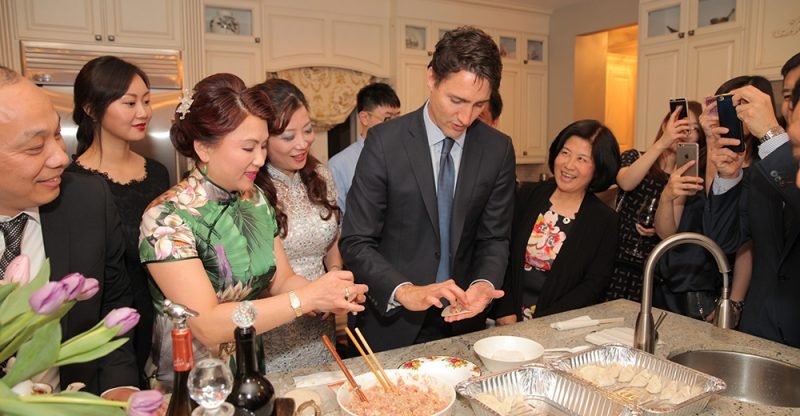
 2025 Federal Election2 days ago
2025 Federal Election2 days agoChinese Gangs Dominate Canada: Why Will Voters Give Liberals Another Term?
-

 Energy2 days ago
Energy2 days agoEnergy, climate, and economics — A smarter path for Canada
-

 Health23 hours ago
Health23 hours agoRFK Jr. Drops Stunning Vaccine Announcement





